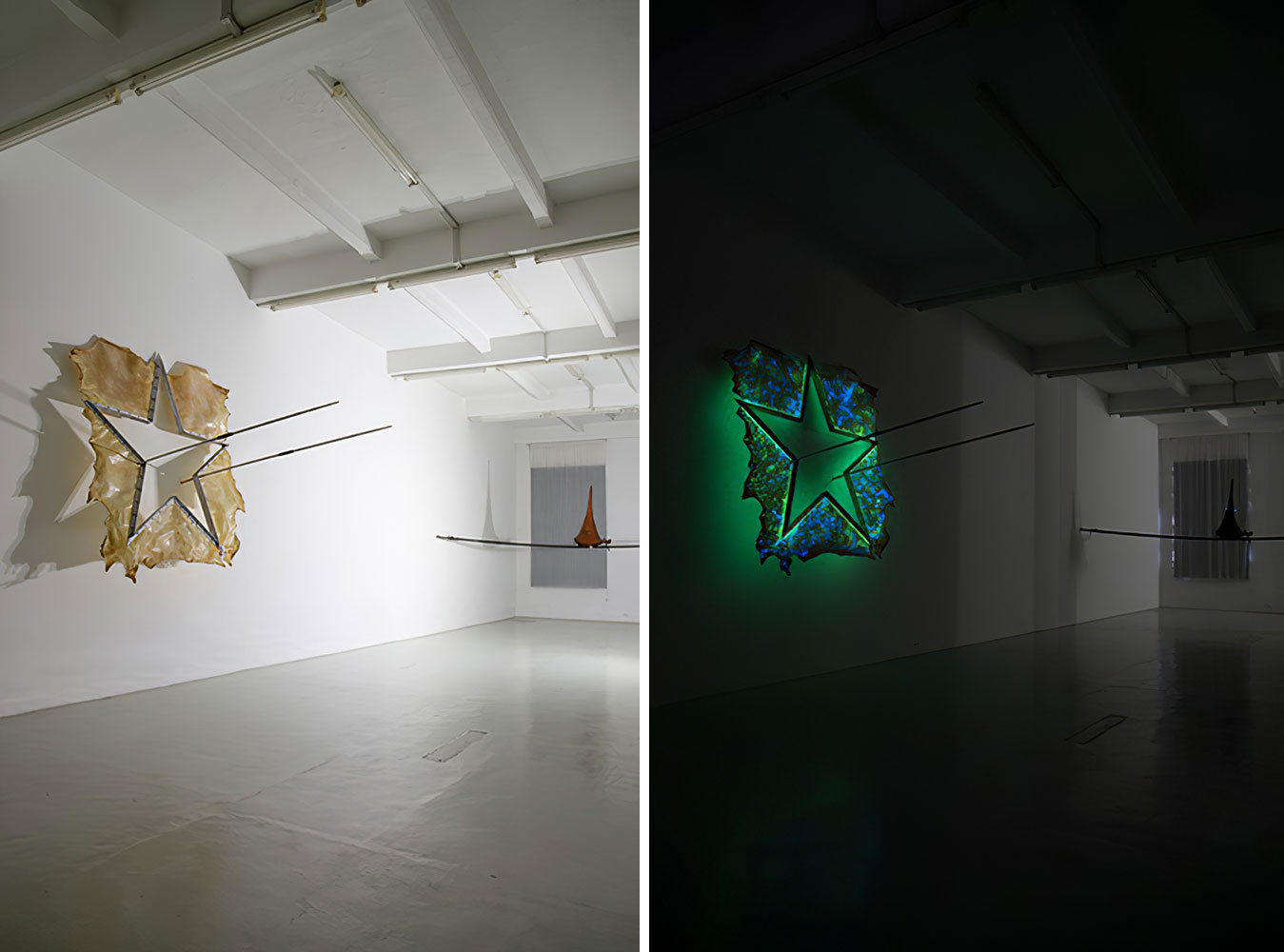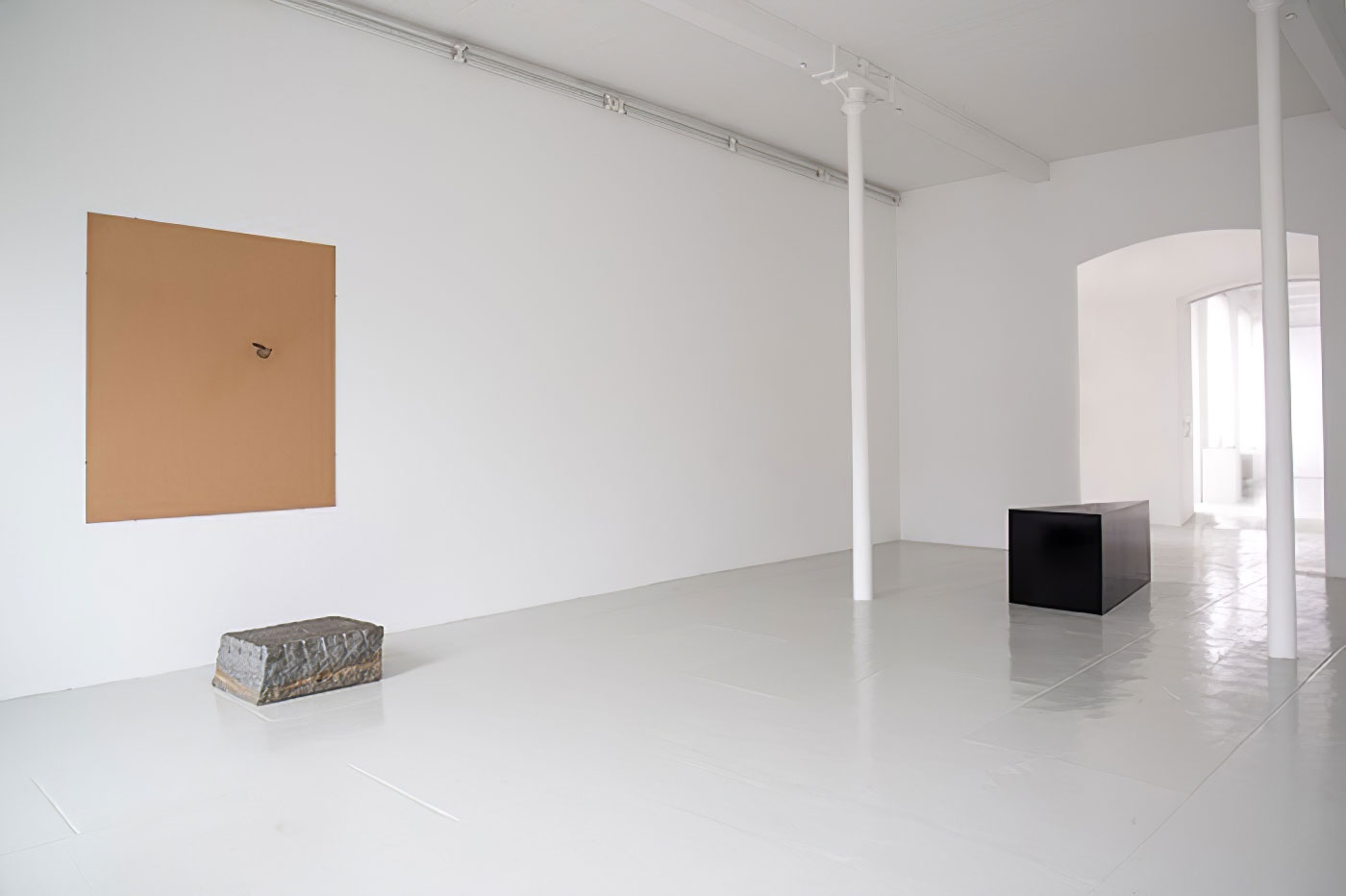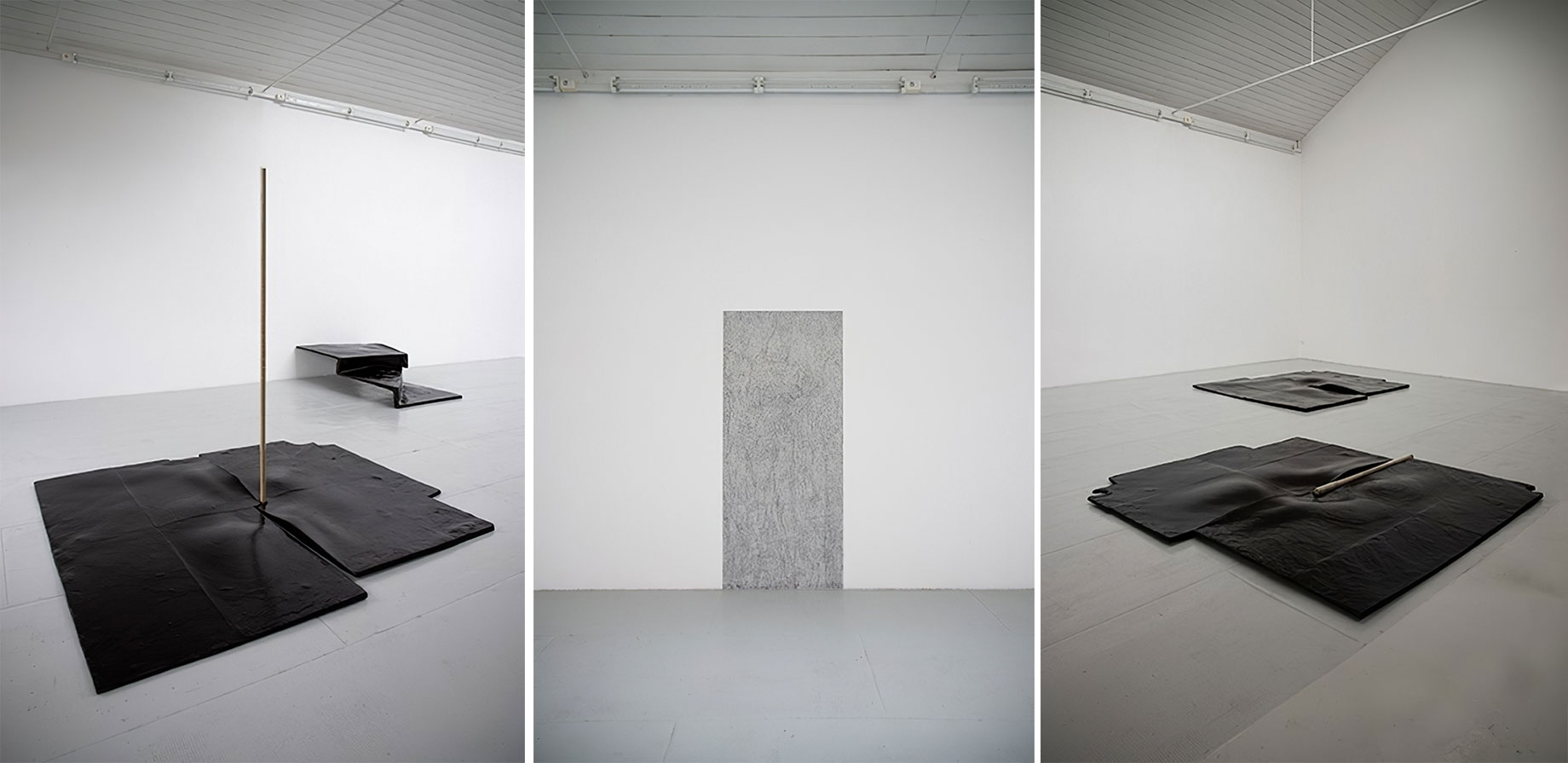ART-PRESENTATION: Underlining
 The Arte Povera movement took place between the end of the 1960s and the beginning of the 1970s in major cities throughout Italy and above all in Turin. The exhibition “Underlining – Space: place, person, time, each of which touches on the other” at Tucci Russo – Studio per l’Arte Contemporanea, in Turin, brings together works by the Arte Povera artists: Giovanni Anselmo, Pier Paolo Calzolari, Giulio Paolini, Giuseppe Penone and Gilberto Zorio.
The Arte Povera movement took place between the end of the 1960s and the beginning of the 1970s in major cities throughout Italy and above all in Turin. The exhibition “Underlining – Space: place, person, time, each of which touches on the other” at Tucci Russo – Studio per l’Arte Contemporanea, in Turin, brings together works by the Arte Povera artists: Giovanni Anselmo, Pier Paolo Calzolari, Giulio Paolini, Giuseppe Penone and Gilberto Zorio.
By Efi Michalarou
Photo: Tucci Russo Archive
Working mainly as a sculptor, but also with photography and drawing and using mixed media including metal, plastic, water, stone and even perishable foods, Giovanni Anselmo’s work is highly Conceptual and will require constant “feeding” due to many of the perishable and tenuous elements he employs in his art. Since 1965, when Giovanni Anselmo was suddenly struck by his relative size within the vast energy and structure of the universe, he has devoted himself to an ongoing investigation the very most finite and infinite concepts and forms, focusing on elemental laws and the forces of nature such as gravity, tension, magnetism and energy. Anselmo’s conceptually taut yet lyrical work, which defies limitations and encompasses installation, painting, sculpture and architecture, brings together a wide range of organic and inorganic materials that manage to address the most universal, poignant and perplexing questions of the human condition and the natural world.
Pier Paolo Calzolari is one of the most significant Italian artists of the post-war period and one of the still-active original members of the Arte Povera movement. His 1969 text ‘La casa ideale’, and its realisation through a series of works is considered one of the seminal statements of the movement. His work, concurrent to that of Conceptual art and Post – Minimalism, has rapidly evolved beyond the confines of a defined movement. Calzolari distinguished himself from other Arte Povera artists through his refusal of the avant-garde’s rejection of the past. His work seeks an equal and horizontal relationship between past, present and future. While his work shared similarities, it veered in a unique direction, bringing in elements of Renaissance painting and the Romantic movement. Calzolari’s sculptural installations are known for capturing ephemera and use elemental materials including frost, fire, salt, lead, water, copper, neon, moss, roses, feathers, eggs and tobacco leaves.
Giulio Paolini is best known for an artistic practice that is inscribed in a more strictly conceptual sphere. From the outset of his career, Paolini has developed a complex research centred as much on the artist’s tools as on the figure of the artist as an operator of language and accomplice of the viewer. The main characteristics of his artistic expression include citation, duplication and fragmentation, which are used as expedients for staging the distance between a finished model for making the work a ‘theatre of evocation.’ Articulated and composed designs, centred on additive dynamics (ordering, repetition, juxtaposition) and centrifugal forces, (explosions and dispersions starting from the centre) or centripetal ones (concentration, superimposition, joining), accompany the procedures drawing from a vast store of cultural mythologies and memories that are recaptured in photography, collage and plaster casts. More recently, Paolini’s incessant investigation of the definition and purpose of the work has been insistently concerned with the act of exhibiting, which he sees as the fundamental moment of encountering the work.
Throughout his fifty-year career, Giuseppe Penone has employed a wide range of materials and forms in an exploration of the fundamental language of sculpture. A protagonist of Arte Povera, Penone explores respiration, growth, and aging—among other involuntary processes—to create an expansive body of work including sculpture, performance, works on paper, and photography. Penone’s early performance-based works evolved in direct response to the forests near his native village of Garessio, Italy, where he interacted with trees, water, and marble. In the “Alpi Marittime” works (1968), his gestures and interventions left physical traces over extended periods of time: tree trunks were distorted by copper wire, stones, and bronze casts of the artist’s hand; mechanisms made of ropes and deer hides reacted to the weather; and casts of Penone’s face, hands, and feet were immersed in a stream bed.
Gilberto Zorio’s work emphasizes process and alchemy, exploring transformative natural phenomena like evaporation or oxidation and the effects wrought upon materials by these chemical interventions. He has always been preoccupied with the idea of energy. This focus led him to examine the properties of electricity, incorporating a lamp or incandescent tubes in some pieces. In other works, he adopted star and javelin forms—both archetypal constructs intimating energy. Zorio frequently employs fragile materials in his sculpture, creating giant stars from terra-cotta or perching Pyrex alembics containing liquid solutions upon slender steel javelins. He tends to suspend or balance these components in purposely precarious installations, suggesting the tensions and transience of the physical realm.
Info: Tucci Russo – Studio per l’Arte Contemporanea, Via Stamperia, 9, Torre Pellice TO, Duration: 28/6-19/12/20, Days & Hours: Wed-sun 10:30-13:00 & 15:00-19:00 (by appointment only), www.tuccirusso.com





![Gilberto Zorio, CONFINE INCANDESCENTE (Il confine è la linea immaginaria che si concretizza con la violenza) [Detail], 1970, © Gilberto Zorio, Courtesy the artist and Tucci Russo - Studio per l’Arte Contemporanea](http://www.dreamideamachine.com/web/wp-content/uploads/2020/08/067.jpg)

![Gilberto Zorio, CONFINE INCANDESCENTE (Il confine è la linea immaginaria che si concretizza con la violenza) [Detail], 1970, © Gilberto Zorio, Courtesy the artist and Tucci Russo - Studio per l’Arte Contemporanea](http://www.dreamideamachine.com/web/wp-content/uploads/2020/08/085.jpg)





Center: Giuseppe Penone, PORTA, 1969-2020, Graphite frottage on wall, 230 x 100 cm, © Giuseppe Penone, Courtesy the artist and Tucci Russo – Studio per l’Arte Contemporanea
Right: Giuseppe Penone, CONTOUR LINES 2 & CONTOUR LINES 3, 1989, Cast iron, glass, earth, © Giuseppe Penone, Courtesy the artist and Tucci Russo – Studio per l’Arte Contemporanea
